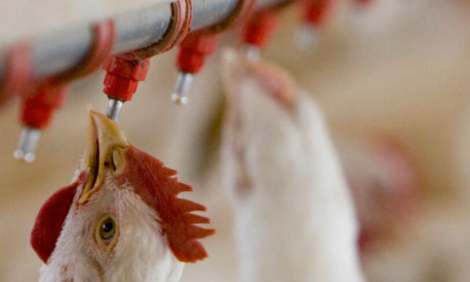



50th Anniversary of IEC: What Comes Next for the Egg Industry?
AUSTRIA - For two days, the members of the International Egg Commission (IEC) gathered in Vienna to discuss the hot topics affecting the world egg industry at the IEC Business Conference. In addition, the event celebrated the 50th Anniversary of the IEC, writes Nuria Martínez Herráez, editor at ThePoultrySite.What Can the Egg Industry Do with Male Birds from Layer Lines?
On Monday, Dr Ferry Leenstra, from Wageningen UR Research Centre in the Netherlands, and Professor Rudolf Preisinger, from Lohmann Tierzucht, focused their presentation on what could be done with male layers.
On one hand, Dr Leenstra presented the data obtained in a recent study about the acceptance within the industry and the general public on alternatives to culling male layers after hatching, which is the most common practice in commercial production. Male layers need too much time and feed to be profitable compared to broilers or female layers.
On the other hand, Professor Preisinger offers an alternative for the layer breeding industry by presenting dual-purpose birds which would be a cross of broilers and layer lines. This cross would produce a regular size male and a smaller female, both of them needing lower maintenance. This could be an alternative as the meat yield production and the egg production are negatively correlated within the poultry industry. However, he admitted in his conclusions that sex determination in eggs will be more efficient than dual-purpose birds.
This topic was briefly mentioned by another speaker on Tuesday, Professor Hans-Wilhelm Windhorst, from University of Vechta (Germany) as one of the future challenges for the egg industry. This might be a short-term issue to be addressed by the industry because starting in January 2015, there will be a ban against killing male layer chicks in a German region.
Professor Windhorst identified the potential ban on beak trimming and increasing antimicrobial resistance in animal production as additional challenges for the future.
Feed Additives to Improve Sustainability
A timeless concern for egg producers, feed was also addressed by the speakers at this IEC Business Conference.
On Monday, Markus Dedl, CEO at Delacon, gave a presentation on phytogenic feed additives, a tool to help not only to reduce production costs in egg production by the inclusion of non-traditional raw materials in layer diets (mainly, by substituting soybean for other proteins) but also to reduce the environmental impact by reducing CO2 emissions. According to Mr Dedl, feed accounts for over 62 per cent of greenhouse gas emissions in egg production.
Grain and Oilseed Market Outlook
Dr Franz Fischler, former Agriculture Commissioner for the EU, offered an outlook on the current situation and midterm prospects for European Agriculture. Specifically to the poultry industry, he highlighted that poultry meat consumption continues growing in the EU and volatility in egg prices is still observed. Moreover, he emphasised that soybean is still a highly important as raw material for feed in the EU. This poses a problem to the industry as the EU is not self-sufficient in this feed ingredient.
On Tuesday, Nan Dirk Mulder, an analyst at Rabobank, offered an outlook about the grain and oilseed markets and the impact on the egg industry. He highlighted that the potential return of 'El Niño' this year could have a huge impact on soybean and corn crops and this was something that the industry would need to follow up in the coming months.
On the other hand, it is expected that there would be abundant supply of the main grains (wheat and corn) and soybeans, a fact that would increase the stocks and potentially reduce market prices. In addition, the slowdown in grain demand by the biofuel industry will also give some relief to the market.
The impact of the H7N9 avian influenza in Asia was also observed as a key factor affecting the grain and oilseed markets. Along with an economic slow-down in Asian economies, this disease is affecting the Chinese demand for grains and oilseeds.
Mr Mulder gave some good news to the egg industry as he stated that the industry would benefit from lower feed prices this year. However, he noted that they should be prepared for volatility in the market as any change on the fundamentals could have a huge impact on their business and, on his own words: "Winners are prepared for changing market circumstances."
The International Egg Foundation
On this occasion, the International Egg Commission launched a new charity: the International Egg Foundation, an independent charitable foundation that has been established to increase egg production and consumption in developing countries, to help improve nutrition, health and education.
Its mission is to provide people living in developing countries with the means and methods to access high-quality egg protein in order to help fighting hunger in the world.








